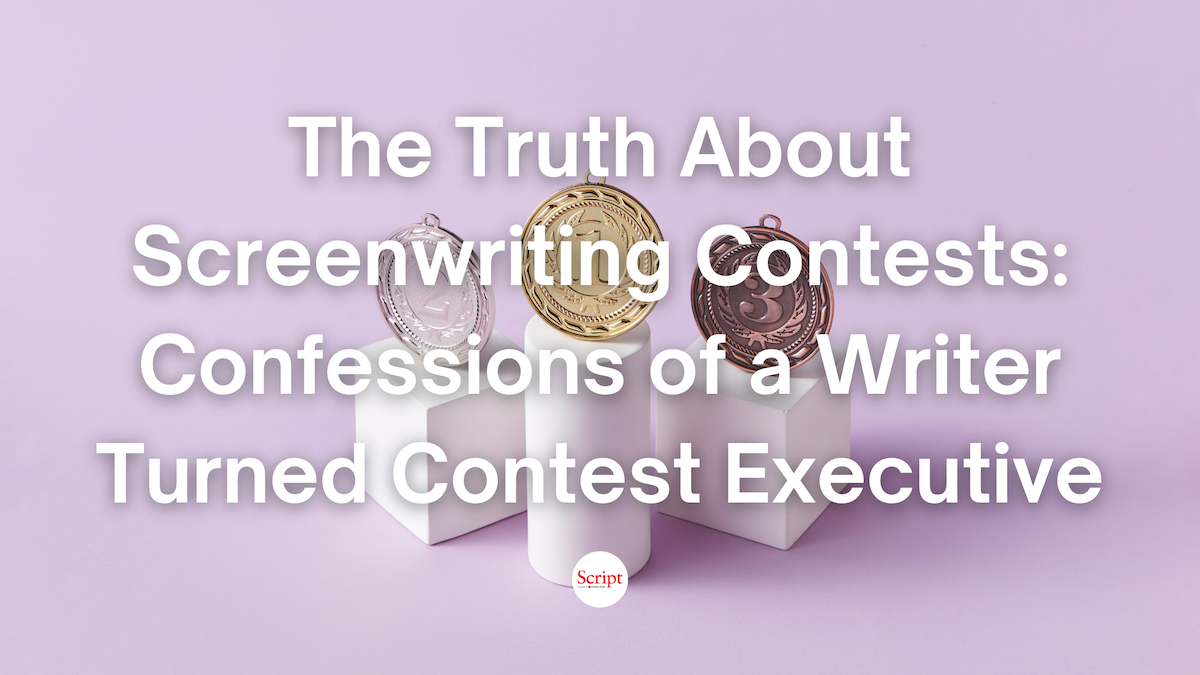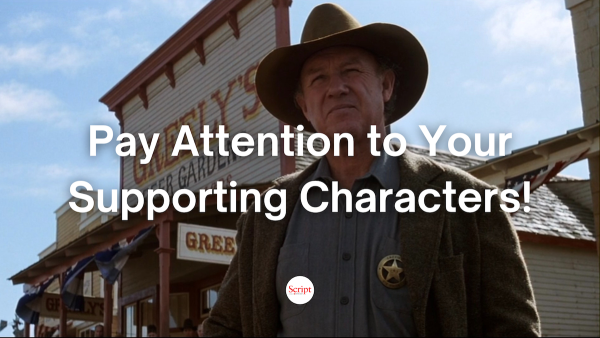Jeanne’s Tuesday Screenwriting Tips: Writing the First Draft
Script Magazine Editor, Jeanne Veillette Bowerman, discusses what happens long before the screenplay polish – face writing the first draft with reckless abandon.
Before I dive into this week’s Screenwriting Tip, I want to clarify that these tips are intended to be short and to-the-point, and are intentionally not as lengthy and detailed as my Balls of Steel articles. So, please keep that in mind when you read them. I thank you, in advance.
OK, now onto the real business of the day. Last week’s tip on Polishing a Screenplay brought many questions from readers that I wanted to address. The best way to do that is to go backwards and discuss what happens long before the polish – the writing of the daunting first draft.
Simply put, writing the first draft should be a pure vomit-fest – wordy prose, on-the-nose dialogue, overwriting, and anything and everything your gut wants to explore in the story. Let the characters have some fun, and see where they take you. As Stephen King puts it, “Write with the door shut.” Don’t worry about what anyone thinks, because no one, and I mean NO ONE, should ever see your first draft but you.
Don’t be fearful of going overboard on draft one, because there’s a benefit to playing in the new world you are creating. Get to know it. Get to know your characters. See if tangents bring out better subplots or darker conflicts. Letting go of the reigns can help you create a more compelling story in the long run.
To find a new angle in your story, challenge every scene by asking, “What if…?”. That question is yet another great lesson I learned from my mentor, Unknown Screenwriter. Whenever I ask, “What if…?”, it always allows my brain to explore other possibilities for plot points or character development.
Raise the bar. Push the envelope.
FINAL DRAFT 11 is here! Get your copy of with new and updated features today and a discount! Sale ends September 30th!
DOWNLOAD NOW!
What if… you took a risk and wrote without a filter? My guess is you’d end up with something more original than what comes across a reader’s desk on a daily basis.
As for overwriting prose, I’ll turn back to the example I gave in Polishing a Screenplay.
This is how the original descriptor read:
This is an early draft descriptor. The one in the first draft was probably even longer. But when you read it, you get a very clear picture of the world. I needed that visual anchored in my mind as I wrote. But once I nailed the scene, that much detail only weighed the page down.
Do I need “manure-littered”? Not unless someone is stepping in it. Do the streets have to be cobblestone? Not unless that detail is important to the story. It’s not. Both of these descriptions were merely a way for me to visualize the world of Slavery by Another Name (SBAN). Those details can now be slashed, saving both space on the page and budget for the set designer. I’m confident the future crew will thank me for not having to dodge horse patties.
This is how it reads now:
Lean and mean.
When I write first-draft dialogue, it’s always on-the-nose, especially when I’m working with a writing partner. This way we are very clear as the intent of what we want that character to say. Then, I whip out the red pen and draw blood until the dialogue sounds natural.
Think of the first draft like a sculpture. Slap down that gigantic wad of clay and start molding. If you’ve ever worked with clay, you know you always start with big, broad shapes, not the details. That’s what a first draft is: A potential piece of art, not fully formed yet.
Every tip has an exception. Allow me to give you two:
1. Once you've followed the tips in the Polishing a Screenplay post, there might be enough room to add some of the descriptions you loved back in. When you cut everything to the bone and only have a few truly exceptional descriptors, those will stand out and draw the reader in further. But don’t overdo it. I wouldn’t use more than three. The less you have, the more the important ones will stand out.
Here’s the only one I chose to use in SBAN:
The reason I chose not to tighten it was simply to slow this particular moment in the script down. It’s one of the most important plot and character points for Reese – the dawn of the biggest trial of his life. He's about to change history. This moment in the story is worthy of pausing the reader.
2. When introducing a character, you can take a few liberties in order to show the actor (or their agent) the type of role it is. The more important the character, the more thought you need to put into their introduction.
Here’s our introduction of John Pace, the plantation owner who enslaves the innocent Jon Davis:
While a longer descriptor than our others, this one shows, without any doubt, Pace is going to be a serious problem for Davis. Period. I didn’t need to state that. I needed to show it.
As I read over this post, about to hit “publish,” I’m laughing. I started out by telling you these tips are intended to be short, and I’ve written twice as much as I anticipated. See how that works? But I’m not going to slash this, because I prefer to write unfiltered when it comes to helping writers. It is what it is. Hope you got something out of it.
Since we’re all here to learn, please share you tips for getting a first draft out in the comments. Your advice might help a fellow writer who’s blocked.
Now, shut the door and get that draft down!
Need Help Outlining Your First Draft? Get our FREE Story Structure Tips Download
~~~~~~~~~~~~~~~~~~~~~
Script Magazine is launching a new mentor series with Oscar-winning producer Ed Saxon (Silence of the Lambs).
If you use code ED&JEANNE, you'll get 20% OFF either the entire series or the individual classes. I had the honor of meeting Ed at last year's Screenwriters World Conference. I can't possibly express how critical it is for a writer's success to learn from people who have achieved it themselves. Plus, Ed is just one funny guy who delivers invaluable lessons every writer needs to know.
Jeanne Veillette Bowerman is a Senior Executive at Pipeline Media Group and Book Pipeline, Editor-in-Chief of Pipeline Artists, Director of Symposium—a year-round conference in the arts, co-host "Reckless Creatives" podcast, partner at Fringe Press, former Editor-in-Chief of Script magazine and a former Senior Editor at Writer's Digest. Recognized as one of the "Top 10 Most Influential Screenwriting Bloggers," her "Balls of Steel" column was selected as recommended reading by Universal Writers Program. A compilation of her articles is now available at The Writers Store—Balls of Steel: The Screenwriter's Mindset. She is also Co-Founder and moderator of X's weekly screenwriters’ chat, #Scriptchat, and wrote the narrative adaptation of the Pulitzer Prize-winning book, Slavery by Another Name, with its author, Douglas A. Blackmon, former senior national correspondent of The Wall Street Journal. More information can be found on her website. X: @jeannevb | IG/Threads: @jeannevb_ | BlueSky: @jeannevb.bsky.social







